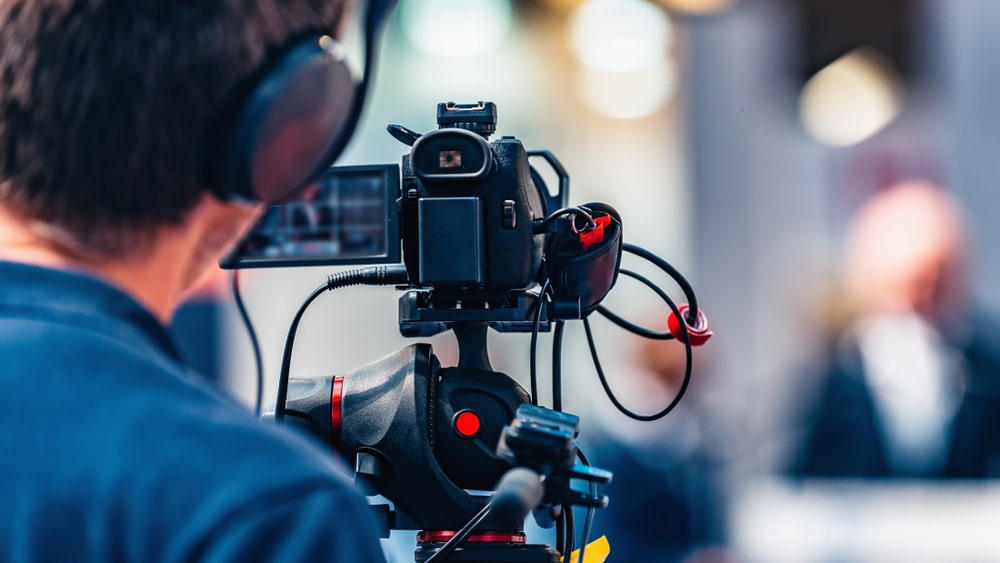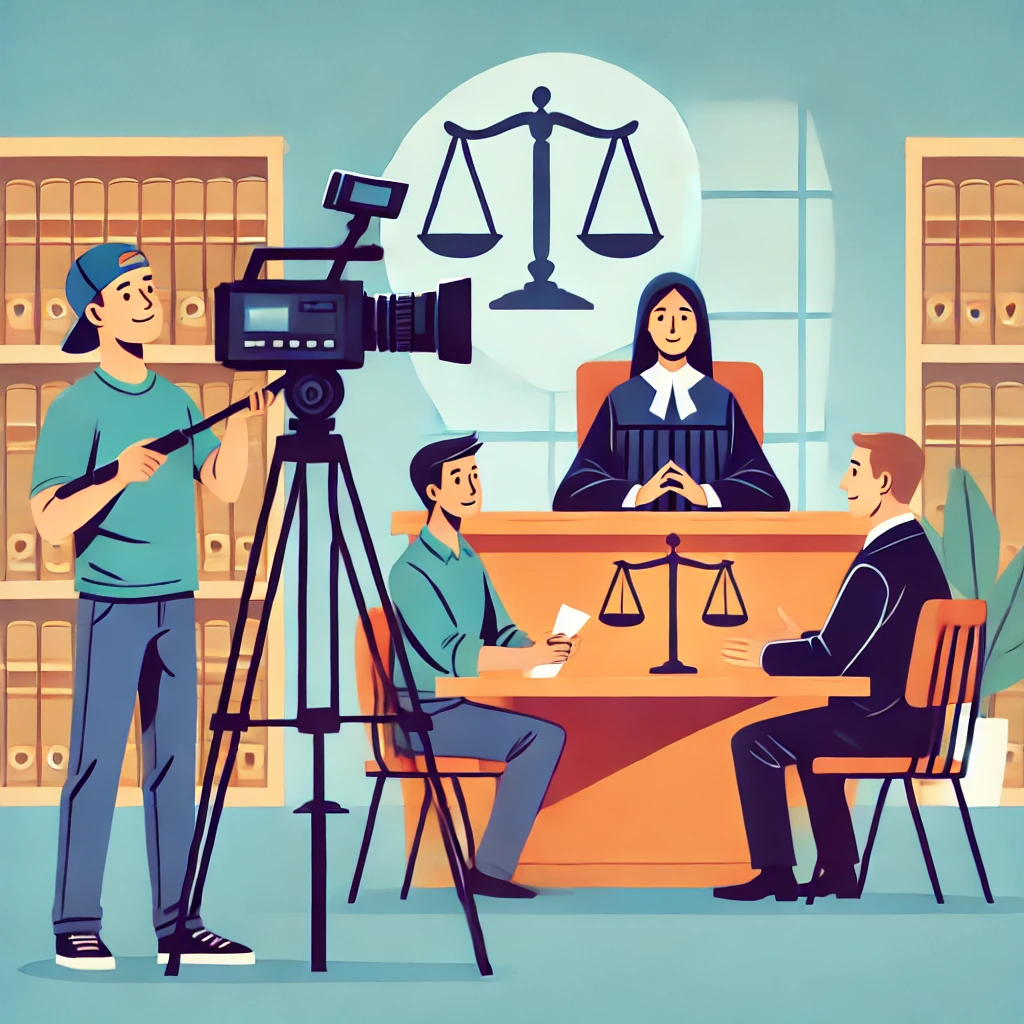The Role of Legal Videography in Documenting Depositions and Tests
Comprehending the Significance of Videography in Legal Proceedings
The integration of videography into lawful proceedings has emerged as a significant aspect in the discussion and interpretation of proof. By recording aesthetic elements such as body language and face expressions, videography improves the narrative surrounding witness statements and can profoundly affect jury perceptions.
Function of Videography in Proof
Videography plays an increasingly crucial role in lawful process, acting as an effective tool for providing evidence. The assimilation of video clip recordings right into the legal framework enables a more dynamic depiction of facts, allowing judges and jurors to imagine events as they transpired. This aesthetic paperwork can incorporate a variety of products, including security video footage, videotaped witness statements, and specialist demos, all of which can significantly boost the evidentiary landscape.
One of the main benefits of videography is its capability to catch subtleties that might be lost in written accounts. Face expressions, body movement, and situational context can offer necessary insights, aiding to share emotions and objectives that text alone can not. The use of video proof promotes a much more engaging court room experience, possibly helping jurors in understanding complicated situations.
As technology advances, the top quality and access of videographic proof have actually improved, making it an indispensable component of modern-day lawful practices. Courts progressively acknowledge the worth of video as a reputable resource of details, triggering attorneys to adjust their approaches for proof presentation. Eventually, videography serves not just to show truths however also to enhance the general honesty of the judicial process.

Enhancing Credibility and Clarity
A considerable advantage of incorporating videography in lawful process is its capability to improve both trustworthiness and quality of evidence offered in court. Videographic evidence can record nuances that composed records may overlook, such as tone, body language, and context. This graph allows courts and courts to better understand the situations surrounding the case, therefore cultivating an extra accurate understanding of the events concerned.

Furthermore, the clearness paid for by videography minimizes the likelihood of misconception that can develop from textual summaries. This precision is particularly crucial in complex cases, where details can be conveniently misinterpreted. Eventually, by presenting evidence in an aesthetically available style, videography not only strengthens the honesty of the judicial procedure yet also supports enlightened decision-making by those associated with lawful proceedings.
Effect On Court Understanding
The addition of videographic proof considerably influences jury understanding, typically leading to more involved and informed deliberations. Jurors are normally much more receptive to visual info, which can improve their understanding of complex cases. Videography presents facts in a manner that is both obtainable and engaging, permitting jurors to attach with the evidence on a more individual degree.
Furthermore, the capability to witness events as they happened can evoke psychological responses that created transcripts or verbal statements might fall short to generate. This psychological interaction can lead jurors to develop stronger viewpoints regarding the trustworthiness of witnesses and the total narrative of the instance. The visual representation of proof additionally aids in making clear obscurities, making it much easier for jurors to understand the context and value of the information presented.
Additionally, videography can serve as an effective device for storytelling, making it possible for attorneys to construct a persuasive narrative that resonates with the court. When jurors can visualize scenarios and witness key moments, their capacity to intentional attentively and reach a knowledgeable verdict is dramatically enhanced, ultimately affecting the end result of lawful proceedings.
Best Practices for Legal Videography
Carrying out finest techniques in lawful videography is essential for making certain that aesthetic evidence is both efficient and reputable in the court. Initially, choose qualified specialists who specialize in lawful videography to guarantee the technical quality of the recordings. This consists of making use of high-resolution cameras and expert sound devices to catch clear visuals and audio.
2nd, keep correct documents throughout the recording procedure. This involves creating an in-depth log that includes timestamps, descriptions of the material, and the identities of all people existing. Such documents can bolster the credibility of the video clip.

In addition, think about the usage of suitable editing and enhancing methods. While it is essential to protect the initial web content, small changes for clarity-- such as improving audio degrees-- can enhance the general presentation without changing the material.
Future Trends in Legal Videography
As lawful videography remains to advance, arising methods and modern technologies are forming the future landscape of visual proof in the courtroom right here (Legal Videography). One significant fad is the assimilation of high-def and 4K video top quality, boosting the quality and detail of recorded testaments and proof. This enhanced resolution help jurors in thoroughly reviewing the trustworthiness of witnesses and visit homepage the nuances of the presented products
Additionally, making use of expert system (AI) in video clip analysis is obtaining traction. AI devices can aid in determining crucial minutes in video footage, generating transcripts, and even analyzing non-verbal communication, which offers deeper insights into witness integrity. Online reality (VIRTUAL REALITY) and enhanced truth (AR) are poised to transform exactly how evidence is provided, allowing jurors to submerse themselves in crime scenes or circumstances, consequently promoting an extra profound understanding of the context.
Conclusion
In recap, videography acts as a crucial tool in lawful proceedings, improving the presentation of proof and enhancing the total understanding of cases. By catching non-verbal signs and reinforcing the reputation of witness accounts, videography substantially affects jury perception and decision-making procedures - Legal Videography. Complying with best practices guarantees the efficiency of lawful videography, while emerging patterns promise to further boost its function in the judicial system, inevitably fostering a more enlightened and engaged lawful setting
Videography plays a significantly crucial function in legal procedures, offering as an effective tool for offering proof.A significant advantage of incorporating videography in lawful process is its capability to improve both reliability and clearness of evidence presented in court. Eventually, by presenting evidence in a visually easily accessible layout, videography not only reinforces the integrity of the judicial process however likewise supports educated decision-making by those entailed in legal proceedings.
In summary, videography offers as our website an important device in lawful procedures, enhancing the presentation of evidence and improving the total understanding of situations. Legal Videography. Adhering to best techniques makes certain the effectiveness of legal videography, while arising patterns guarantee to further boost its function in the judicial system, ultimately fostering a more informed and engaged lawful atmosphere